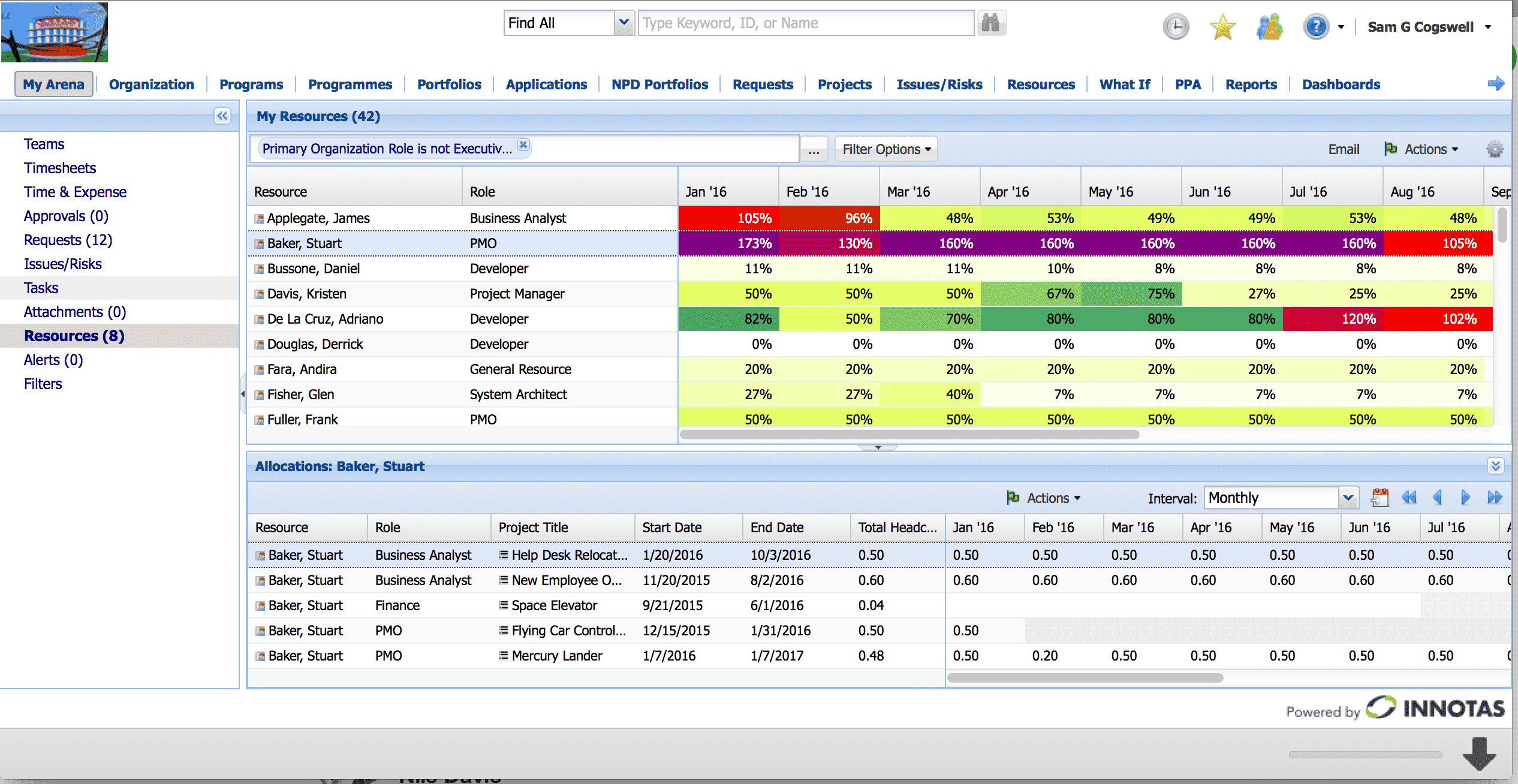In a lot of companies, project managers and resource managers sit down every week in an annoying productive meeting to discuss what resources are needed in various projects, and get an agreement on resource assignments. This is usually done based on information collected in spreadsheets that project managers and resource managers make and share. Of course, if the project managers have a project management system, they then enter all the information they agreed to into the system. At least that’s the theory.
However, in this model, there are a lot of areas for mistakes to be made, and of course it’s not “governable” – it’s very hard to make sure the business rules and policies are really being followed since everything is done via spreadsheets, conversations and phone calls; all outside of the system. This type of governance relies on the trust that the resource managers have in the project managers to do the right thing.
But when resource managers need to know where their resource are allocated, for budget, efficiency or agility reasons, it requires looking into each project to see the assignments. Bottom line, if you’re a resource manager, it’s pretty easy to lose track of what your resources are working on. In fact we frequently hear this from our customers. The project managers need resources to execute their projects, but the resources work for other people, that don’t need to know all the details of the projects, just what their people are working on.
We’re happy to introduce a revised resource workbench that lets resource managers see not only what their resources are working on, but how well utilized they are. This way, all project stakeholders – project managers, resource managers, and management – can see and communicate information based on the same data. This also gives resource managers direct ability to help staff projects based on resources they have available, and utilize project managers requests to assign resources accordingly. Win-win.
Ultimately, this means not only fewer of those well-loved weekly meetings where project managers and resource managers have to get together and compare spreadsheets, but it’s all accessible within the tool – in our case, the Innotas project management system – so the chances of errors are significantly reduced, and the level of transparency and governance is much higher.





